Wound Dressings
Optimum Wound Care
Painless Separation Guaranteed
It’s not always easy to take optimum care of injuries and wounds. That’s why doctors and the chronically ill use silicone-coated wound dressings. This kind of dressing can be changed more conveniently and ensures optimum healing of wounds.
Injuries and wounds are a part of life. But taking care of them appropriately is not always simple. That is where wound dressings coated with silicones can offer valuable help. They are breathable, adhere gently to the skin and prevent the wound from drying out. The patient also experiences much less pain when dressings are changed. Silicones can provide optimal conditions for wound healing and help accelerate recovery.
Life expectancy is rising worldwide, which should be good news for everyone everywhere. This demographic change, however, also presents immense challenges to society. “As more people reach advanced age, the population suffering from large or chronic wounds also rises,” says Dr. Manuela Beckmann, who was responsible for global marketing of wound-care silicones at WACKER until the end of last year.
The human skin loses its resilience as we get older. It becomes more sensitive, thinner and more prone to injuries. There is also less blood circulation, and skin cells don’t divide as rapidly as in youth. The result: wounds take longer to heal, and they don’t heal as well anymore. That makes proper care all the more important.
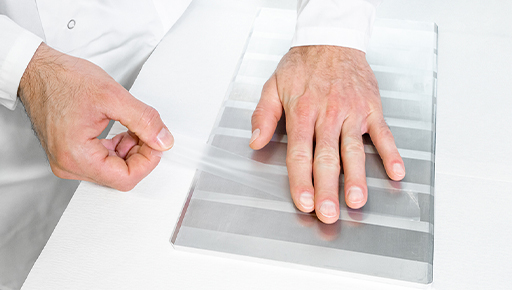
Attaching a release film to a silicone-coated backing material. As is the case with wound dressings, the film must be easy to detach and must not leave any residue when peeled off.
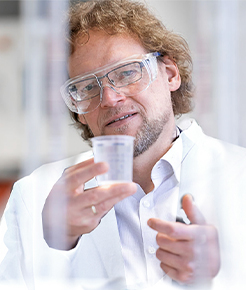
Dr. Thomas Gröer is a technical service manager based in Burghausen who develops silicone adhesives for wound and stoma care.
Wound Care with Less Pain
Silicone-coated wound dressings and bandages have enabled new options in wound care. WACKER has produced medical-grade silicones for a broad range of customers for some 25 years and is Europe’s leading manufacturer in the field.
Professional wound care without silicones is now virtually inconceivable, for several reasons. Silicone adhesives are applied directly to the wound. Being hydrophobic, i.e. water-repellent, they will adhere to dry skin only – not to moist skin. Wounds are generally moist, so silicone dressings won’t stick to them or to their edges. The dressings also cannot knit with newly formed tissue. The breathable silicone layer offers protection from external influences such as bacteria and moisture. Because it enables permeation of water vapor, fluids and air, the protective layer provides an ideal environment for wounds to heal. It also prevents exudates coming into contact with and softening healthy skin.
But silicone-coated dressings offer even more advantages: they adhere less strongly, which makes them more pleasant to remove. Removal causes hardly any pain or wound trauma – a huge relief for patients with large or chronic wounds. In addition, silicone bandages are soft and flexible, making them more comfortable to wear than conventional adhesive bandages.
“Customers increasingly opt for the adhesive with higher added value. That means our silicones, without question.”
Egbert Klaassen, Wound Care Segment Manager
Yet another distinguishing feature of silicone is that, if a dressing with a silicone layer is applied incorrectly, it can be easily removed and repositioned without impairing adhesion in any way. That is a major advantage compared with conventional dressings, which can strip skin cells as the dressing is being removed and then will not adhere properly when reapplied.
WACKER has worked hard on developing silicones with these outstanding properties for use in medical wound care. That meant making hydrophobic silicones usable for this application. “The silicone dressing must absorb moisture and then be able to wick, i.e. draw off, that moisture to the outside,” explains Dr. Thomas Gröer, who is in charge of application technology for these innovative silicone adhesives at WACKER’S Burghausen site.
Silicones – the Product of Choice for Professional Wound Care
High-tech wound dressings usually comprise several layers, and each one performs an important function. Facing the skin, the silicone adhesive layer is placed directly on the wound. It is secured to a polyurethane carrier film and perforated, which makes sure that wound fluid and blood are able to permeate to the absorbing layer. The film is followed by a thin acrylate layer and a layer that absorbs the exudate from the wound. Some dressings also feature an extra polyurethane foam layer for stabilization.
“Such silicone bandages are essential for treating chronic wounds,” says Sascha Casu, who heads the Hamburg-based Acute Wound Care division of Swedish bandage manufacturer Essity. Specializing in medical products for wound care, compression therapy and orthopedics, Essity sells both conventional bandages and plasters with acrylate-based adhesives and high-tech products featuring silicones. “There is a case to be made for both technologies,” says Casu, who has worked closely with WACKER for years. “Silicones are much kinder to the skin and have better adhesive and release properties. Acrylates, on the other hand, are comparatively inexpensive and adhere more securely on the first application.”
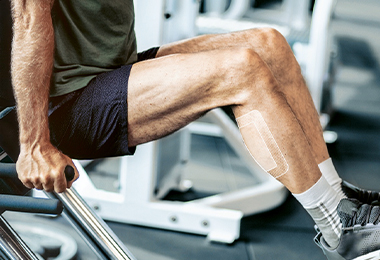
More and more often, the large plasters needed to treat chronic wounds are being coated with silicone. As the coating is breathable, it enhances the healing process.

Silicone adhesives are skin compatible and do not stick to wounds. This makes them ideal for sensitive skin.
Silicones with Increased Adhesive Strength
Silicone-coated wound dressings are the preferred choice for professional treatment of severe or weeping wounds, especially in hospital settings, Casu notes. But they are also being used increasingly for the treatment of chronic wounds and on persons with skin conditions and sensitive skin. “The demand for professional wound-care material for home use is rising, and pharmacies are selling more and more of it,” Manuela Beckmann says.
For a very long time, silicone dressings were used mainly in hospitals to treat chronic wounds. Now, silicone adhesives for acute wound therapy are making inroads into the retail market. “We’ve successfully developed silicone adhesives that stick reliably even when less silicone is used,” Thomas Gröer says.
WACKER conducted many trials to achieve the same adhesive strength with less material. The breakthrough wasn’t long in coming. “We were able to adapt the silicone adhesives to make them adhere much more strongly. With that improvement, a thinner silicone layer is quite sufficient,” Gröer concludes. This opens up completely new possibilities for manufacturers of wound dressings. “Customers increasingly opt for the adhesive with higher added value. That means our silicones, without question,” emphasizes Egbert Klaassen, who succeeded Beckmann as WACKER’S new wound care segment manager this year.
Opportunities in Stoma Care
WACKER has established a foothold in another medical field as well: the treatment of people with colostomies, ileostomies and urostomies. To enable mobility and free movement, patients wear a bag that is attached directly to the body and encloses the stoma. That puts the skin under constant stress.
Gentle care of these skin areas is key to the patients’ well-being. The most innovative development in this field comes from Trio Healthcare. This British company is the first manufacturer to market a complete line of stoma care products with patented, custom-formulated silicone adhesives. WACKER supplies the base silicone material used. “Developing the requisite adhesives was a challenge,” as Thomas Gröer explains. “No fluids must leak. All moisture must be absorbed in order to prevent skin irritation.”
“Such silicone bandages are essential for treating chronic wounds.”
Sascha Casu, Director of Acute Wound Care, Essity
To achieve this, Trio Healthcare developed the first breathable silicone ostomy base plate. It is affixed to the skin and secures the ostomy bag to the body. However, the skin under this plate, which is 12–15 centimeters in diameter, will quickly begin to sweat. The adhesive on the plate must be able to absorb the sweat rapidly, without impairing adhesive strength. “Our new silicone adhesives can do this, making them suitable for stoma care,” says Gröer.
Gentle Support – The Structure of a Wound Dressing
Click to find out more
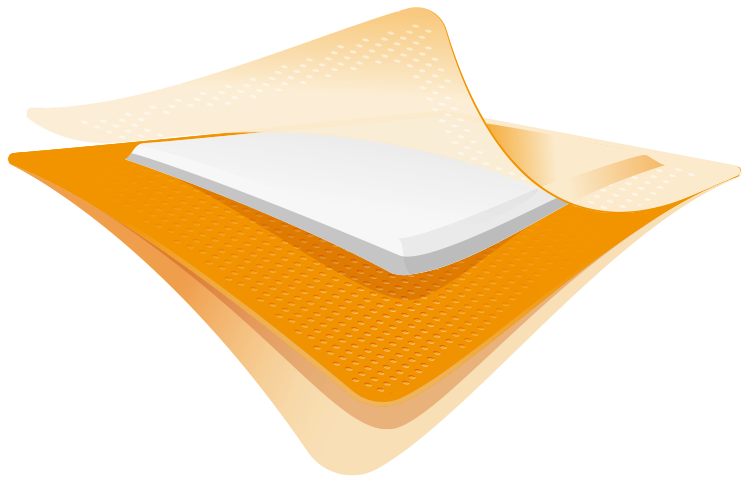
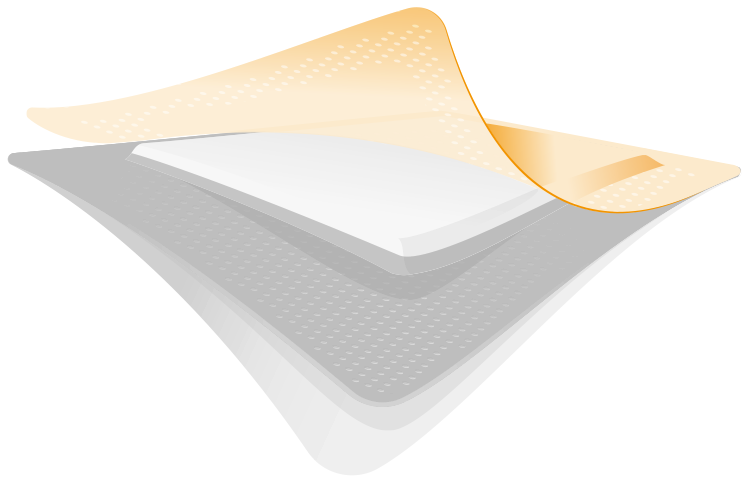
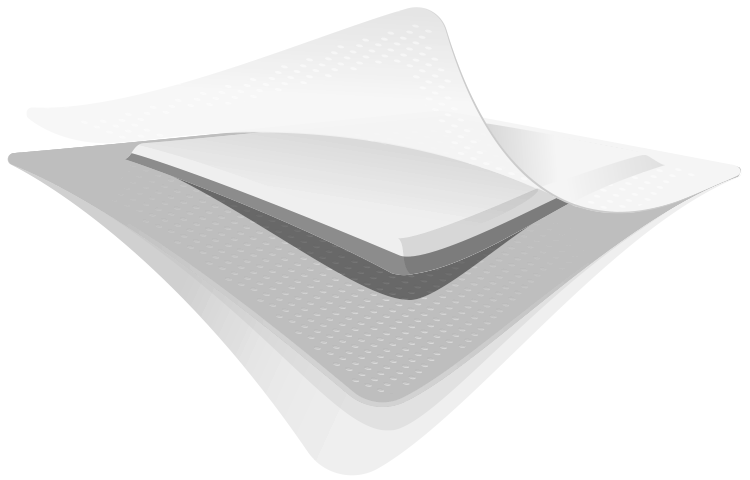

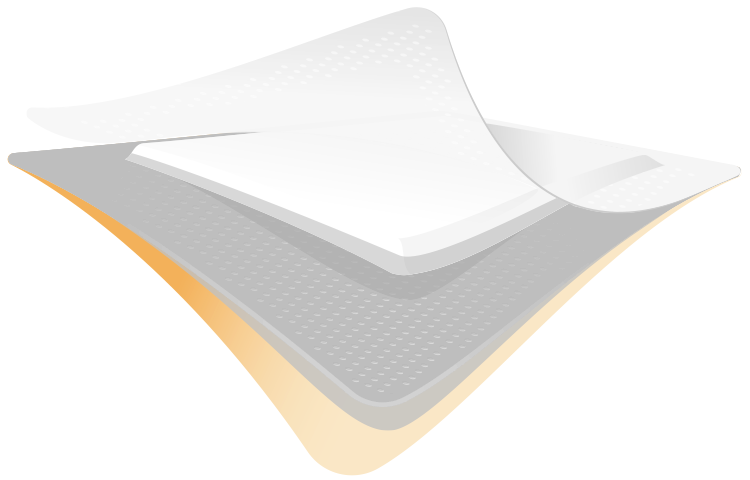
Layer 1
Polyurethane or nonwoven cover layer
Layer 2
Absorbent layer, for example polyurethane foam
Layer 3
Perforated polyurethane film, coated with silicone adhesive
Layer 4
Release film
Stoma Care Reimagined
This improves the quality of life of stoma patients immensely. For Lloyd Pearce, CEO of Trio Healthcare, finding new solutions for stoma care was a personal mission, with a member of his own family affected. “One-half of all stoma patients suffer from skin conditions and irritated skin. I wanted to do something about that.”
That is why he founded Trio Healthcare in 2006. He and his colleagues have since pulled out all the stops to replace the hydrocolloid technology so widespread in stoma care. Hydrocolloids do adhere well, and they also absorb moisture well. But they are not breathable. The result: the skin slowly softens, leaving it prone to injury and damage from body wastes. That can’t happen with the company’s new products using WACKER’S medical silicone adhesives. They are moisture-permeable and allow the skin to breathe, preventing skin irritations and wounds from occurring in the first place. The base plates adhere safely and tightly to the skin without irritating it.
Huge Development Potential
Trio Healthcare’s products are now available in 22 countries. Pearce sees lots of additional potential. “We won’t stop researching and trying out new things. No ostomate, i.e. stoma patient, should be left having to deal with severe skin irritation.”
The use of skin-friendly silicone adhesives in medical applications is by no means exhausted. “There are still lots of opportunities,” says Thomas Gröer. Silicones are suitable for anything humans attach to their bodies: insulin pumps, EEG sensors, position sensors for dementia patients – even wearables are now affixed using silicone, he says. “So, there is still plenty for us to do.”